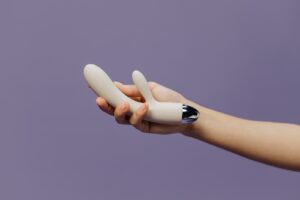Luckily, there are some home remedies that can help alleviate the pain. Try applying a warm compress or taking over-the-counter pain medication and wearing a supportive bra.
Breasts can also become painful during sexual arousal, especially when the nipples are stimulated. This happens frequently before a period, during pregnancy and with hormonal birth control pills.
Hormonal Changes
Women’s bodies are full of hormonal changes that influence a whole range of bodily functions. For instance, the surge of hormones that accompany sexual arousal and intercourse can affect the breasts. In some cases, this may cause pain, swelling and sensitivity in the nipple area.
This is because the body reacts to the sexual stimulation by releasing oxytocin, a neurotransmitter linked to love and bonding. This, in turn, can stimulate the nipples and breasts to grow bigger and firmer as a result.
Other times, the nipples and breasts feel sore after sex because the pectoralis major muscle is overworked, especially if the partner is rough or overplayed. This type of soreness is usually temporary and can be eased by using a moisturizer or wearing nipple protectors during intimate activities.
In addition, anything that impacts your hormones (like fertility treatments, certain types of birth control pills and more) can trigger nipple pain because it shifts your estrogen levels. This is why nipple pain tends to occur around the time of menstruation, puberty and pregnancy. However, if your nipple pain is consistent and not related to any of these events, consult with your health care provider. They can help you figure out what’s causing the nipple pain and suggest ways to ease it. For example, they might recommend a different type of birth control or other treatments that will balance out your hormones.
Excessive Pressure
The nipples are very sensitive during sexual arousal. This is due to the rush of blood to the breasts that engorges them and causes pain and tenderness. In addition, when a woman’s nipples are touched during intercourse the stimulation sends a signal to the brain to release oxytocin which is the love hormone that creates a feeling of pleasure and closeness between partners.
It is important to note that pain in the breasts should not be ignored. It could indicate a serious medical condition, especially if it is persistent or accompanied by nipple discharge or lumps. It is a good idea to see a doctor right away to determine the cause of the breast pain and find out what steps to take next.
Fortunately, there are several ways to alleviate breast pain after sex including wearing properly fitting bras and taking over the counter pain relievers like ibuprofen or aspirin. In addition, certain dietary habits can also help reduce breast pain and discomfort such as eating plenty of fruits and veggies, drinking lots of water and reducing caffeine intake. Finally, psychological factors can also contribute to breast pain and engaging in stress management techniques such as deep breathing or meditation can decrease discomfort. Ultimately, discussing breast pain with a partner and seeking medical attention as needed can help alleviate the discomfort.
Mastitis
Many new mothers experience cyclical breast pain due to monthly fluctuations in the levels of estrogen and progesterone. This pain usually occurs before and during menstruation, but it may also be present during pregnancy and breastfeeding. It generally disappears once the hormone changes stop. It is important to talk to a doctor about these symptoms, as it may be a sign of something more serious.
A doctor will be able to diagnose the underlying cause of your breast pain. They will conduct a physical exam, review your medical history and perform any necessary tests. The test results will help determine the best course of treatment to relieve your symptoms. Treatment options may include prescription pain relievers, hormone therapy or antibiotics. It is also important to wear a properly fitting bra, avoid caffeine and alcohol, exercise regularly and practice relaxation techniques to reduce stress and tension.
When mastitis is left untreated, it can lead to pus formation in the affected breast which must be drained surgically. This infection is easily treatable, though, so make sure you see a practitioner as soon as possible if you suspect mastitis.
Unlike clogged ducts, which only cause pain around the lump, mastitis causes pain and inflammation in the entire breast. It can feel painful, swollen and hard to the touch. The infected area is often red and wedge-shaped. Warming the breast before a feed and applying a warmed washcloth or a warmed gel pack can help to ease inflammation. Using cold packs between feeds can help relieve pain, too.
Cancer
Occasionally, breast pain after sex can be a sign of serious medical conditions such as cysts or cancer. If the pain persists or is accompanied by other symptoms, such as fever or nipple discharge, a doctor should be consulted immediately. In this case, the doctor may recommend imaging tests to check for any potential underlying causes of the pain, such as a mammogram or ultrasound. Blood tests may also be needed to test for hormonal imbalances or infections.
Pregnancy and breastfeeding can also cause nipple pain. However, this type of breast pain tends to be cyclic and should resolve on its own once the pregnancy ends or the breastfeeding ends. Infections, such as mastitis, can also cause breast pain after sex. Infection-related pain will typically only affect one or both of the breasts and nipples. Some women experience nipple pain as a result of certain medications, such as birth control pills. In some cases, this is because the pill contains high levels of estrogen.
Breast pain after sex can be a frustrating and inconvenient side effect of many sexual and non-sexual activities. Understanding the underlying causes of this pain can help you find ways to minimize discomfort and improve your overall quality of life. Self-care strategies such as wearing a well-fitted bra, using warm or cold compresses on the breasts, avoiding caffeine and alcohol, and engaging in stress-management techniques can all help ease discomfort.
See Also:






